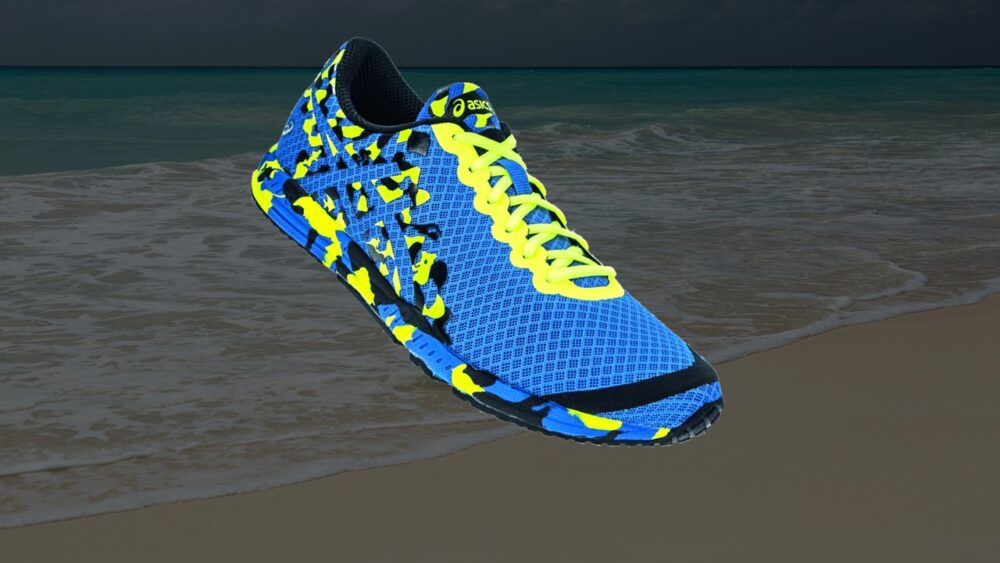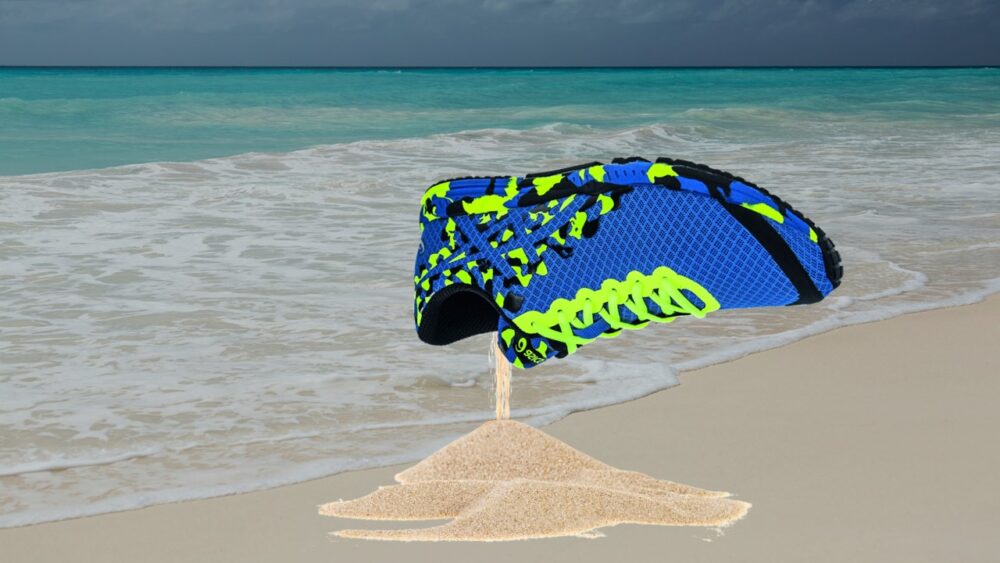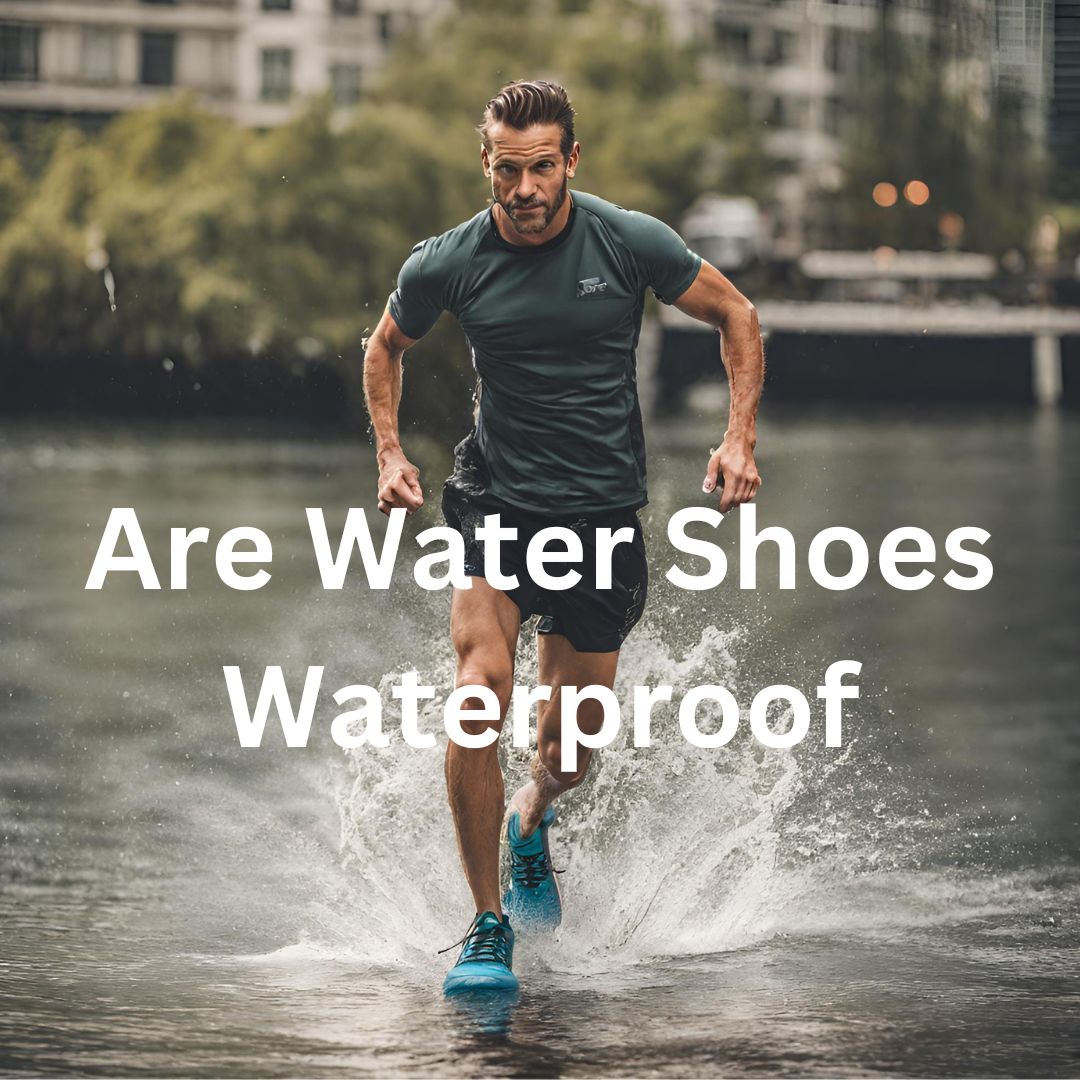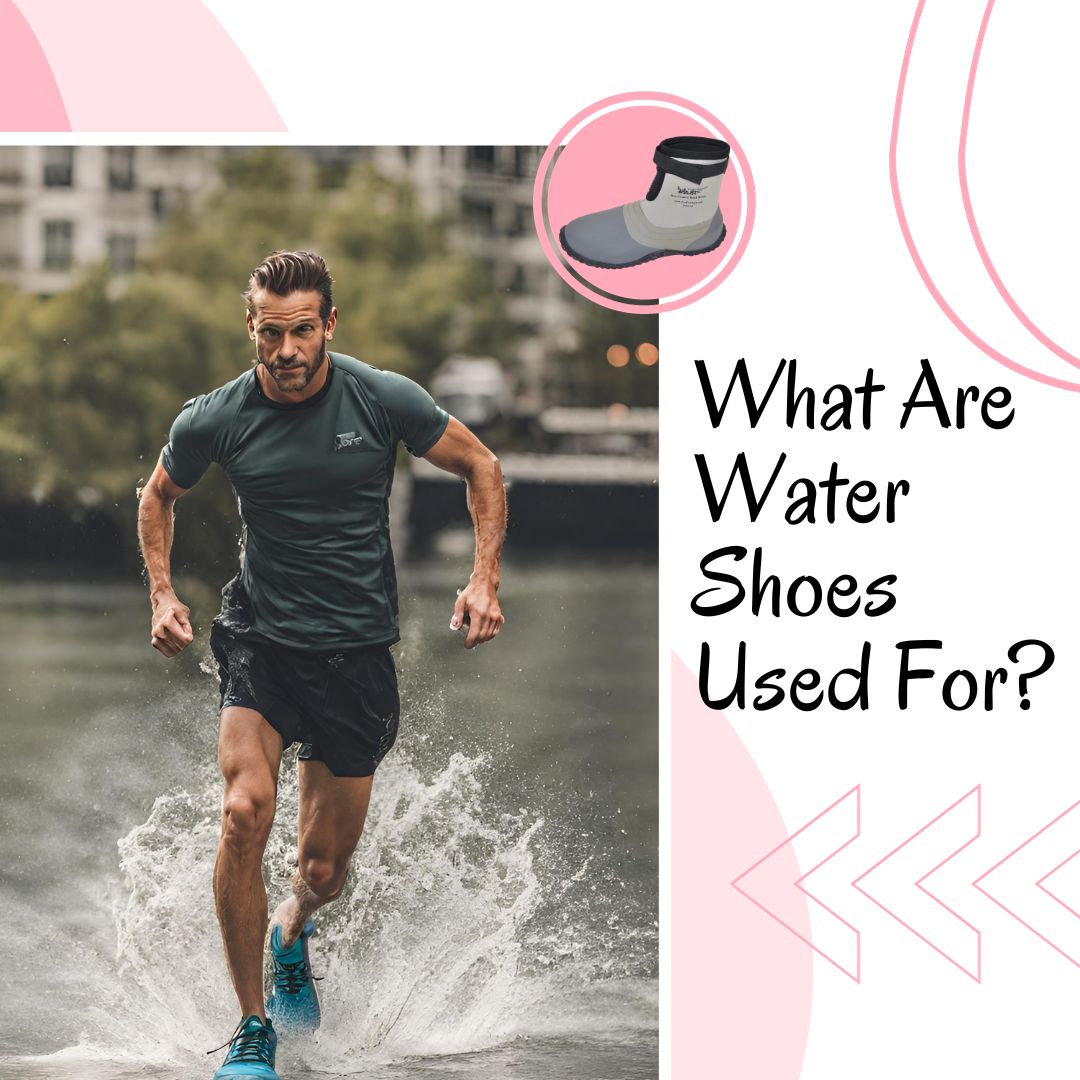Can Water Shoes Be Washed
Can water shoes be washed? Yes, water shoes can be washed. Water shoes are a crucial accessory for any water-based activity, whether you’re kayaking, rafting, or swimming. Not only do they protect your feet from rocks, debris, and other hazards in the water, but they also provide added traction and grip.
But with all that use, water shoes can quickly become dirty, smelly, and even a breeding ground for harmful bacteria. Fortunately, there are a variety of methods you can use to clean and maintain your water shoes, depending on the materials they’re made of and the level of dirt and grime.
In this article, we’ll take a closer look at the main topic and the best ways to clean your water shoes, including specific instructions for different materials such as neoprene, rubber, and mesh. We’ll also explore some of the most effective cleaning products and techniques/ read on.
Can Water Shoes Be Washed
Yes, water shoes can be washed to keep them clean and free of harmful bacteria. The cleaning method will depend on the materials that the shoes are made of, but in general, it’s best to avoid using harsh chemicals or high heat, which can damage the shoes and affect their performance.
For neoprene water shoes, for example, you can use a mild detergent and cool water to hand wash them, while rubber water shoes can be wiped down with a damp cloth and mild soap.
Mesh water shoes can be machine washed on a gentle cycle with a mild detergent if it is machine washable. After cleaning, it’s important to allow the shoes to air dry thoroughly before wearing them again.
The Benefits Of Cleaning Water Shoes
Cleaning water shoes regularly has several benefits, including:
1. Preventing Odors
Water shoes are often exposed to water, sweat, and other liquids, which can create a damp environment that promotes the growth of bacteria and fungi.
Over time, this can lead to unpleasant odors that can be difficult to remove. By cleaning water shoes regularly, you can remove any bacteria or fungi that may be causing the odor and keep your shoes smelling fresh.
2. Reducing Bacteria Buildup
Water shoes can harbor harmful bacteria, including E. coli and staphylococcus. Regular cleaning can help to prevent the buildup of these bacteria, which can cause infections and other health problems.
3. Extending The Life Of The Shoes
Water shoes are often made from materials that are designed to resist water damage, such as neoprene, rubber, and mesh. However, exposure to saltwater, chlorine, and other chemicals can still cause these materials to deteriorate over time.
By cleaning water shoes regularly, you can remove these harmful substances and help to extend the life of your footwear.
4. Maintaining Performance And Functionality
Dirty or damaged water shoes can affect your performance and safety in the water. For example, shoes with worn soles may provide less traction and increase your risk of slipping or falling.
By cleaning and maintaining your water shoes, you can ensure that they provide optimal performance and protection every time you wear them.
5. Improving Appearance
Clean water shoes not only smell better but also look better. Regular cleaning can remove dirt, stains, and other marks that can accumulate on the shoes over time. This can help to restore the shoes’ appearance and make them look newer and more attractive.
6. Avoiding Skin Irritation
Dirty water shoes can rub against the skin and cause irritation, especially if you have sensitive skin. By cleaning your water shoes regularly, you can remove any dirt or debris that may be causing irritation and ensure that your feet stay comfortable and healthy.
7. Preventing Damage To Other Gear
If you’re using water shoes in conjunction with other gear, such as water socks, dirty shoes can transfer dirt, sand, or other debris onto your other equipment. This can cause damage over time and reduce the lifespan of your gear.
By cleaning your water shoes regularly, you can prevent this from happening and protect your other gear.
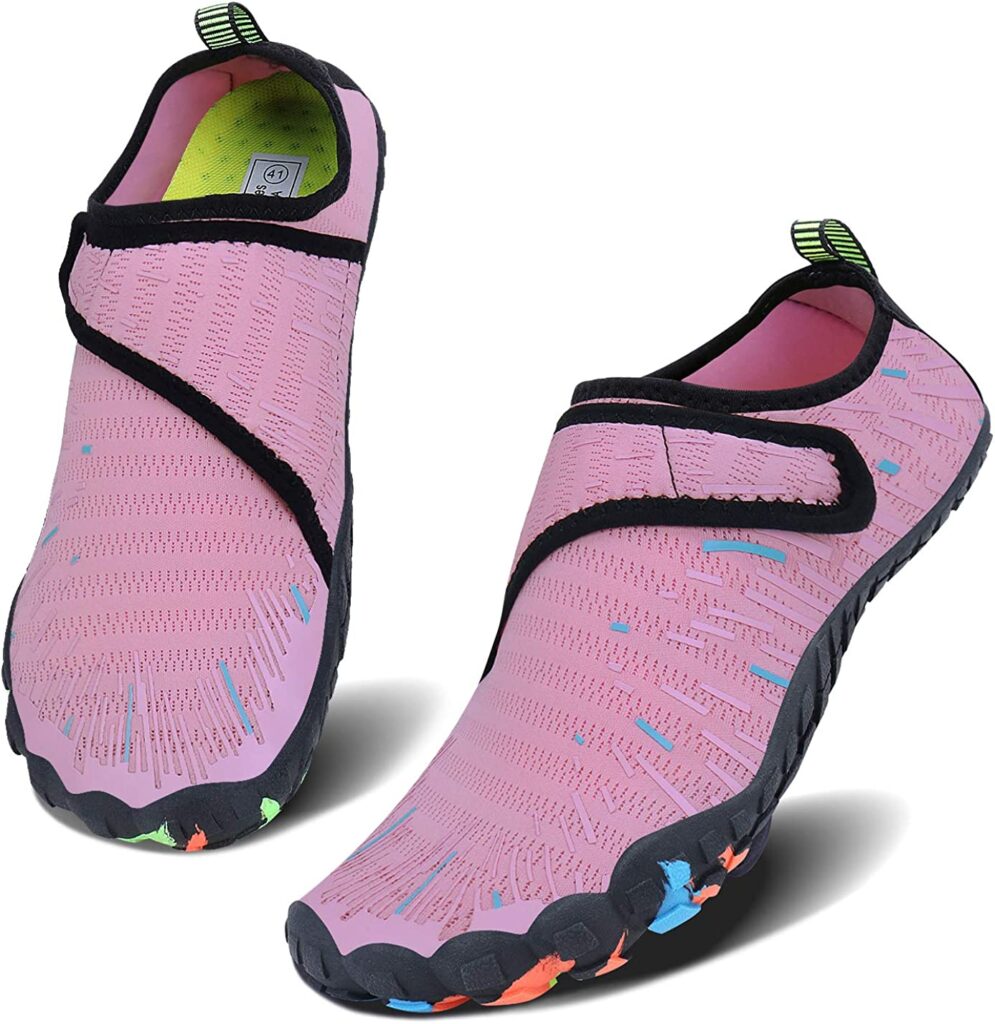
The Materials That Water Shoes Are Made Of (Can Water Shoes Be Washed)
Water shoes are designed to be worn in and around water, so they need to be made of materials that are both waterproof and durable. The most common materials used in water shoes include neoprene, rubber, and mesh. Let’s take a closer look at each of these materials and how to care for them:
1. Neoprene
Neoprene is a synthetic rubber material that is commonly used in water shoes. It is a highly durable, flexible, and comfortable material that provides excellent insulation, making it perfect for cold water activities.
Neoprene is also waterproof and resistant to abrasion, which helps to protect your feet from sharp rocks or other hazards in the water.
However, neoprene can be susceptible to damage from prolonged exposure to sunlight or heat, so it is important to avoid drying it with a heat source or storing it in direct sunlight.
2. Rubber
Rubber is another common material used in water shoes. It is highly resistant to water and abrasion, making it great for protecting your feet from sharp objects in the water. The rubber is also very durable, making it ideal for activities that involve a lot of wear and tear, such as kayaking or rafting.
However, rubber can be heavy and bulky, which can make it less comfortable to wear for extended periods.
3. Mesh
Mesh is a lightweight and breathable material that is commonly used in water shoes. It is quick-drying, making it ideal for activities like paddleboarding or kayaking.
Mesh is also highly breathable, which helps to keep your feet cool and comfortable. However, the mesh is not as durable as neoprene or rubber, and it can be prone to tearing or snagging on sharp objects.
4. Synthetic Leather
Synthetic leather is a type of material that looks and feels like real leather but is made from synthetic materials. It is highly durable and water-resistant, making it a popular choice for water shoes.
Synthetic leather is also easy to clean and maintain, and it tends to be more affordable than real leather. However, synthetic leather can be less breathable than other materials, which can make it less comfortable to wear for extended periods.
5. Nylon
Nylon is a lightweight and durable material that is commonly used in water shoes. It is quick-drying, which makes it ideal for water activities, and it is highly breathable, which helps to keep your feet cool and comfortable.
However, nylon can be less water-resistant than other materials, and it may not provide as much protection from sharp objects in the water.
When choosing water shoes, it is important to consider the materials used and how they will perform in different water activities.
Additionally, it is important to follow the manufacturer’s care instructions to ensure that your shoes last as long as possible. With the right materials and care, your water shoes can provide you with the support and protection you need for all your aquatic adventures.
RELATED: What Shoes To Wear White Water Rafting – Essential Gear For Thrilling Adventures
Step-By-Step Cleaning Instructions (Can Water Shoes Be Washed)
Cleaning your water shoes regularly is important for maintaining their functionality and preventing odors and bacteria buildup. Here is a step-by-step guide to cleaning your water shoes:
Materials Needed
- Mild detergent or soap (such as dish soap or laundry detergent)
- Clean sponge or cloth
- Soft-bristled brush (optional)
- Cool water
- White vinegar or baking soda.
Step 1: Remove any excess dirt or debris from the shoes by gently tapping them together or brushing them with a soft-bristled brush.
Step 2: Fill a basin or sink with cool water and add a small amount of mild detergent or soap. Also, add a spoonful of baking soda and white vinegar to get any odor out of the shoes.
Step 3: Place the shoes in the basin or sink and use a clean sponge or cloth to gently scrub them. Pay special attention to any areas that are particularly dirty or stained.
Step 4: Rinse the shoes thoroughly with cool water to remove all soap and detergent residue.
Step 5: If necessary, use a soft-bristled brush to gently scrub any stubborn stains or dirt on the shoes. Avoid using a stiff-bristled brush, as this can damage the shoes.
Step 6: Rinse the shoes again with cool water to remove any remaining soap or detergent.
Step 7: Allow the shoes to air dry completely before wearing them again. Do not put them in the dryer or expose them to high heat, as this can cause damage to the shoes.
Note: Some water shoes may require specific care instructions, so always refer to the manufacturer’s recommendations before cleaning your shoes.
How To Dry Water Shoes: Tips For Drying And Storing Water Shoes
Properly drying and storing your water shoes is essential for maintaining their shape and preventing damage. Here are some tips for drying and storing your water shoes:
- Hang them up to dry: After using your water shoes, rinse them with clean water and hang them up to dry. Avoid using a dryer or placing them near a direct heat source, as this can cause damage to the materials. Instead, allow them to air dry naturally.
- Avoid direct sunlight: Direct sunlight can cause the materials in your water shoes to break down over time, so it is important to store them away from direct sunlight. If possible, store them in a cool, dry place.
- Use a shoe tree or stuff with newspaper: To help your water shoes retain their shape while drying, use a shoe tree or stuff them with newspaper. This will help prevent them from becoming misshapen or warped.
- Clean and dry them thoroughly: Before storing your water shoes, be sure to clean and dry them thoroughly. This will help prevent the growth of bacteria and mold, which can cause odors and other issues.
- Store them in a breathable bag: If you need to transport your water shoes or store them for an extended period of time, it is a good idea to use a breathable bag. This will allow air to circulate around the shoes, which can help prevent moisture buildup and other issues.
- Avoid folding or creasing: When storing your water shoes, be sure to avoid folding or creasing them. This can cause permanent damage to the materials, especially in the case of neoprene or rubber shoes.
- Keep them away from sharp objects: It is important to store your water shoes away from sharp objects or anything that could puncture or tear the materials. This will help prevent damage and prolong the life of your shoes.
- Don’t store them when they’re wet: It is crucial to ensure that your water shoes are completely dry before storing them. Storing wet shoes can lead to the growth of mold and mildew, which can cause odor and other issues.
- Use a shoe rack: If you have multiple pairs of water shoes, it can be helpful to use a shoe rack to keep them organized and easily accessible. This can also help prevent them from becoming tangled or misshapen.
- Check them periodically: Even when your water shoes are not in use, it is important to check them periodically for any signs of damage or wear. This can help you catch any issues early and prevent them from becoming more serious problems later on.
The Best Water Shoes To Get
If you love spending time in and around the water, whether it’s swimming, kayaking, or just lounging on the beach, then a good pair of water shoes is essential.
Not only do they protect your feet from rocks, shells, and other hazards, but they also provide excellent traction and support in slippery or wet conditions. But with so many different styles and brands on the market, how do you choose the best water shoes for your needs?
Here are some of the best water shoes on the market:
Product Image | Product Name | Key Features | Rating | Price |
| ||||
| ||||
| ||||
| ||||
| ||||
| ||||
| ||||
| ||||
| ||||
|
How To Get Sand Out Of Water Shoes
Getting sand out of water shoes can be a bit tricky, but here are some steps you can follow:
- Shake the shoes: Remove the shoes and gently tap the soles together to get rid of any loose sand particles.
- Brush off the sand: Use a soft-bristled brush or an old toothbrush to brush away the remaining sand particles. Be gentle to avoid damaging the shoes.
- Rinse the shoes: Rinse the shoes with clean water, making sure to wash away any remaining sand particles. You can also use a hose if you have access to one.
- Soak the shoes: Fill a container or basin with warm water and add a small amount of mild detergent. Soak the shoes in the solution for a few minutes to help loosen any remaining sand particles.
- Rinse and dry the shoes: Rinse the shoes thoroughly with clean water to remove any soap residue. Use a towel to gently dry the shoes and let them air dry completely before wearing them again.
How To Clean Smelly Water Shoes
Water shoes are prone to developing unpleasant odors due to prolonged exposure to moisture and bacteria. Here are some steps you can follow to clean and deodorize your smelly water shoes:
- Wash with soap and water: Use a mild soap and water solution to thoroughly clean the inside and outside of the shoes. Scrub any areas where bacteria and odor may be present, such as the soles and insoles.
- Use vinegar: White vinegar is a natural deodorizer and can help eliminate stubborn odors. Mix equal parts of water and vinegar and use a cloth to apply the solution to the inside and outside of the shoes. Let it sit for a few minutes before rinsing it with clean water.
- Baking soda: Baking soda is another natural deodorizer that can help eliminate odors. Sprinkle a small amount of baking soda inside the shoes and let them sit for a few hours or overnight. Then, shake out the excess baking soda and rinse the shoes with water.
- Sun-dry: After washing and deodorizing the shoes, leave them out to dry in direct sunlight. The sun’s UV rays can help kill bacteria and remove any remaining odors.
- Use odor eliminators: There are several odor eliminators available on the market that are specifically designed for shoes. Simply insert the odor eliminator into the shoes when not in use to help keep them fresh.
Can Water Shoes Go In The Dryer
It is not recommended to put water shoes in the dryer, as high heat can damage the materials and cause them to shrink or warp.
Instead, it is best to air-dry your water shoes naturally. After washing them, remove any excess water with a towel or newspaper and then leave them out to dry in a well-ventilated area away from direct sunlight.
Depending on the materials, it may take several hours or even overnight for the shoes to fully dry. Avoid wearing them until they are completely dry to prevent any potential damage or discomfort.
The Bottom Line
So, if your question is “can water shoes be washed?” you have the answer now. Investing in a good pair of water shoes is worth it for anyone who loves spending time in or around the water.
By considering factors such as material, fit, and traction, you can find the perfect pair to keep your feet protected and comfortable during all of your aquatic activities. Don’t hesitate to invest in a quality pair of water shoes today and enjoy worry-free fun in the water.










